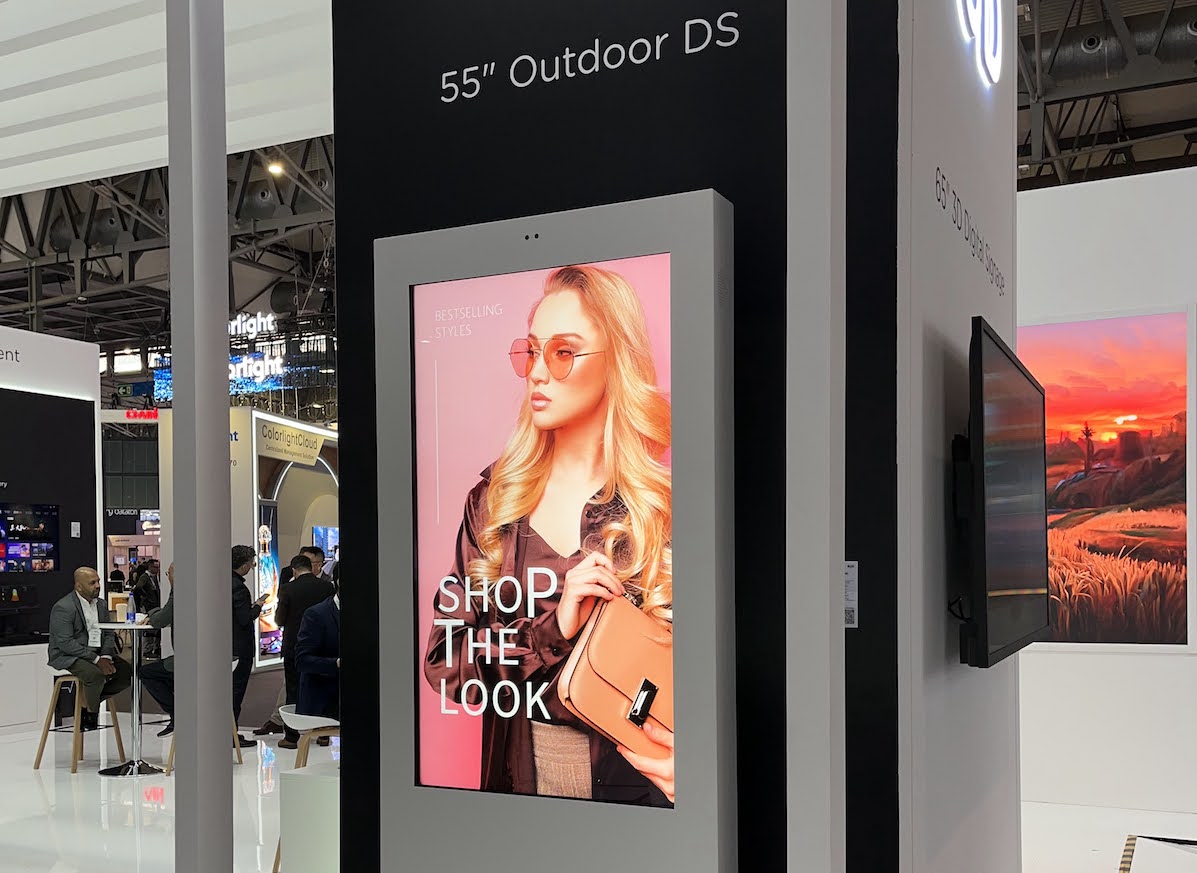
BOE Prototype LCD Gets 2,500 Nits Visuals From A 1,200 Nits Panel
February 19, 2024 by Dave Haynes
One of the big challenges with wandering into stands for Chinese display manufacturers is clearing what can be a big language hurdle, so I was very, very happy during the recent ISE trade show to get a detailed walk around the BOE stand from a senior sales manager who comes from South Africa and works out of London.
David Ross kindly spent about 20 minutes taking me around the stand of what is among the largest, or maybe is the largest, flat panel display manufacturer on the planet, with a head office in Beijing. At ISE 2023, I poked around the BOE stand but never did find anyone who could talk effectively about the products in English.
I don’t know anything more in Mandarin than how to say Thank you, so I have no real right to whine about people being multilingual. But then I am not trying to demo and sell product at a trade show where the dominant business language is English.
Anyway, Ross was terrific to deal with and walked me around the white, minimalist stand at the back end of the main display tech hall at ISE. While some of the other big Chinese display companies are starting to go direct with product, notably TCL and Hisense, Ross says BOE is intent on being an OEM for consumer and pro brands. The only thing it selling as its own is what it calls MLED – the company’s term for fine pitch miniLED.
Like all the display guys, BOE’s products have all kinds of interesting technical wrinkles. The one that intrigued me most was a high brightness panel series that saves energy without sacrificing image quality and viewability. In-window and outdoor displays have to battle with the sun’s naturally bright light, which tends to require that QSR and ad network operators using LCDs crank up the display brightness levels. And more nits means more power consumption and higher operating costs.
Ross showed me prototypes of a new BOE panel he says has the net effect of providing a 2,500 nits viewing experience from a 1,200 nits-rated panel.
“It’s done through a clever process,” Ross says, “of filters and coatings onto the mother-glass on both the rear, and potentially on the front … if there’s a front cover glass, as well. The combination of those allow us to improve the transmittance of the backlight through the panel, giving you that vibrance of picture without having to pump the brightness … just to get the picture.”
“Normally, when you pump the brightness, you wash out the colors and lose a bit of that clarity. Anybody who’s been in that outdoor display game will tell you contrast is preferred more than brightness. So it’s basically being more efficient with the backlighting product.”
Ross wouldn’t get into potential power savings because there are al kinds of variables that can influence a number – including the type and design of creative – but says the potential for power saving is readily apparent.
“Everybody’s looking for the Holy Grail of lower power without affecting picture quality, and we are answering some of that here,” he suggests. “Our expectation for this to the market, is that it will be a couple of months before we start sampling, and mass production is expected potentially nine months to 12 months away.”
This technology is different, Ross says, from reflective LCD technology that was on te BOE stand a year ago. That product uses a silver backplane to reflect light and also a front light – so it is quite different and aimed at competing with the larger color E Ink displays starting to emerge.



Many years ago there was a similar (bonding) methodology that worked pretty well. I remember the demo and the company, Peerless (Chicago Office). They were showing a “daylight readable” LCD back in the days of 700 nits. Their demo was outdoors and it almost worked… still… impressive at the time. I wonder if this is the next (or 4th or 5th) refinement of that technology? Best tech wins!